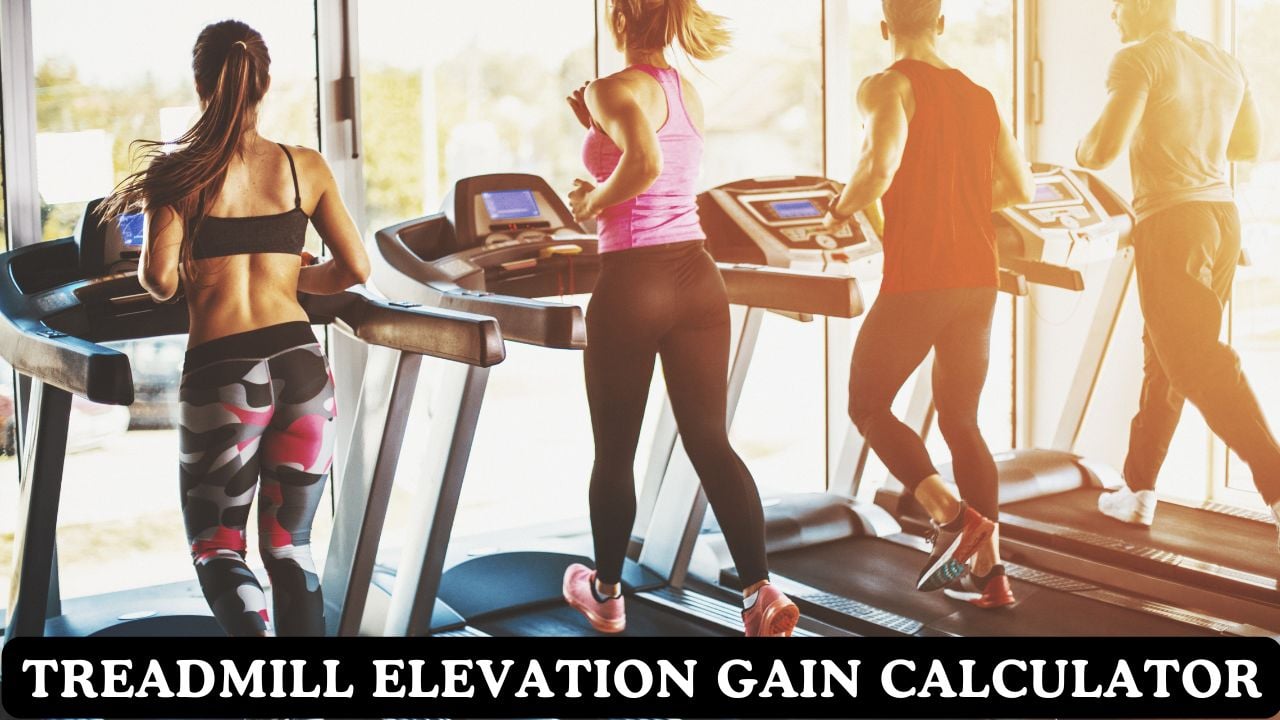Treadmill Elevation Gain Calculator
Calculate precise elevation gain, calories burned, and training intensity for incline workouts

What is Elevation Gain on a Treadmill?
Elevation gain refers to the total vertical distance climbed during your treadmill workout when using incline settings. When you set your treadmill to a 5% grade, you’re simulating the experience of walking or running uphill. Research shows that incline training provides superior cardiovascular benefits compared to flat surface exercise, while also targeting different muscle groups including the glutes, hamstrings, and calves more effectively.
How Incline Affects Calorie Burn
Every 1% increase in treadmill incline can boost your calorie burn by approximately 10-15%. This occurs because your body must work against gravity, requiring more energy expenditure. A 150-pound person walking at 4 mph on a 10% incline burns roughly 120% more calories than the same pace on flat ground (using our refined 12% per grade formula). Scientific studies confirm that incline training is one of the most effective methods for maximizing workout efficiency in limited time.
Muscle Groups Targeted by Incline Training
Treadmill incline training shifts the primary muscle engagement from your quadriceps to your posterior chain. Higher inclines (8-15%) significantly activate your glutes, hamstrings, and calves, while also engaging your core for stability. This makes incline walking an excellent leg strengthening exercise that builds functional strength for hiking, stair climbing, and daily activities requiring upward movement.
Incline Training Benefits & Scientific Research
Treadmill Grade Conversion & Standards
| Grade (%) | Degrees | Difficulty Level | Calorie Increase | Best For |
|---|---|---|---|---|
| 0-2% | 0-1.1° | Beginner | 0-30% | Recovery walks, warm-up |
| 3-5% | 1.7-2.9° | Moderate | 45-75% | Fat burning, general fitness |
| 6-8% | 3.4-4.6° | Challenging | 90-120% | Strength building, hill training |
| 9-12% | 5.1-6.8° | Advanced | 135-180% | Athletic performance, hiking prep |
| 13-15% | 7.4-8.5° | Expert | 195-225% | Elite training, mountain simulation |
Note: Calorie increases are compared to 0% grade at the same speed. Higher inclines provide exponentially greater benefits for cardiovascular fitness and lower body strength development.
Training Programs & Workout Strategies
🏃♂️ Beginner Incline Program (Weeks 1-4)
Week 1-2: Start with 2-3% incline for 15-20 minutes at a comfortable walking pace (3-4 mph).
Focus on maintaining proper posture and breathing rhythm.
Week 3-4: Increase to 4-5% incline for 20-25 minutes. Add 2-minute intervals at 6-7% incline every 5 minutes.
This gradual progression helps build muscle endurance
while preventing overuse injuries common in beginners.
🏋️♀️ Intermediate Hill Training (Weeks 5-8)
Pyramid Intervals: Warm up at 2% for 5 minutes, then increase incline by 1% every 2 minutes until reaching 10%,
then decrease back down. This challenges multiple energy systems.
Strength Focus: Alternate between 8-12% incline walking (2-3 minutes) and 3-4% recovery periods.
This builds significant posterior chain strength
and improves hiking performance.
⚡ Advanced Athletic Training
Power Hiking Simulation: 12-15% incline at 3.5-4.5 mph for 30-45 minutes. This mimics demanding mountain trails
and builds exceptional cardiovascular fitness.
Running Inclines: 6-8% incline running intervals (1-3 minutes) followed by flat recovery jogs.
Excellent for developing core stability
and lactate threshold capacity for competitive athletes.
⚕️ Medical Disclaimer
This treadmill elevation gain calculator provides estimates based on established exercise science principles and should not replace professional fitness assessment. Individual responses to incline training vary significantly due to fitness level, biomechanics, and health status. Elevation gain and calorie calculations are estimates that may not reflect actual individual values. Consult with healthcare professionals, certified personal trainers, or exercise physiologists before beginning intensive incline training programs, especially if you have pre-existing conditions affecting your cardiovascular system, joints, or balance. Start with conservative inclines and durations, gradually progressing as your fitness improves. The calculations provided are for educational and planning purposes only.
